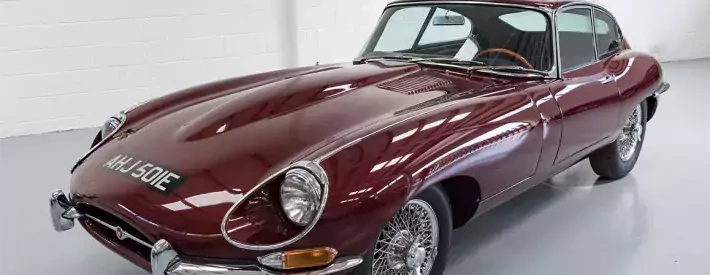Electrifying classics

As we head towards 2030 and the end of sales of new petrol and diesel vehicles, EV conversions could become more commonplace, it’s already happening with classic cars.
As the market shifts away from combustion technology, there’s a question about what happens to classic vehicles. For one company the answer is electrifying them.
Electrogenic coverts classic cars to run on electricity and its latest creation is the iconic Jaguar E-type. It isn’t a one off, and current owners will be able to convert their vehicles too if they wish.
Ian Newstead, Director and Co-Founder of Electrogenic “As with every classic that we convert to run on electric power, the E-type presented its own unique challenges - the main one being the weight of expectation. The E-type’s reputation is well-known in the industry, and living up to that is never going to be easy.”
The Oxford-based firm offers three zero-emission powertrains to provide different driving experiences and levels of performance.
The first is the Tourer conversion that has a lower-than-original kerb weight, enabling nimble cornering and a lively balance between handling and range. The electric powertrain gives the car a maximum speed of approximately 100mph, through the car’s original gearbox to retain the feel of ‘classic’ driving.
There’s a Sprint conversion, with a near-original kerb weight and a powertrain producing 470Nm of torque delivered through the car’s original gearbox. This conversion exceeds the original quoted E-type performance figures, and the additional weight is kept low in the chassis to help optimise balance and handling. To cope with the additional torque, owners can upgrade the brakes and suspension.
Electrogenic also offers a high-performance grand tourer option that removes the original gearbox, updating the power delivery and drivetrain to that of a more modern vehicle. The electric powertrain delivers 300kW of power and 600Nm of torque without a traditional transmission.
The Tourer and Sprint options offer an approximate all-electric range of 150 miles, with one or two optional range-extenders that will add approximately 50 miles of additional range each. The Grand Tourer option offers a single range extension that extends the range on a single charge to 250 miles.
The interior maintains the car’s original dashboard, with switches and dials repurposed where appropriate: for example the fuel gauge will display the state of charge. The new equipment is designed to be integrated using the existing engine mounts, with no modification to the vehicle’s bodywork, making the conversion fully reversible if required.
Steve Drummond, Director and Co-Founder of Electrogenic “Electrifying an icon is always going to be a challenge, and because of that we’ve put a great deal of thought and research into the options that we will provide for customers. Each vehicle we re-create is customised, but engineering three distinct motor options gives customers a clear starting point for the conversion. Each of the motor systems complements our battery and power electronics module that bolts directly to the original engine mounts, and which is designed to accommodate both left and right-hand drive.”
While Electrogenic delivers incredibly bespoke vehicles, and is by no means the first to convert combustion engine vehicles to EVs, it could be a business model that grows significantly as we head towards 2030.




